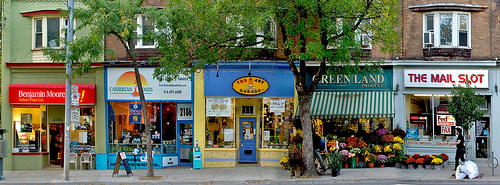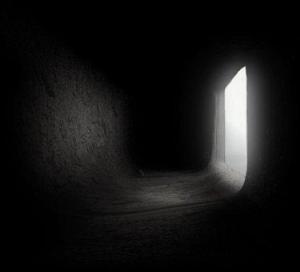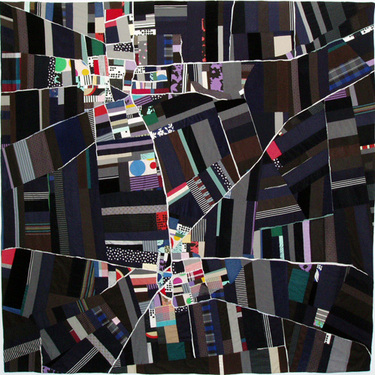 A few days ago, About.com: Women in Bussiness posted an interview I gave to @HefferonJoe about my thoughts on architecture.
A few days ago, About.com: Women in Bussiness posted an interview I gave to @HefferonJoe about my thoughts on architecture.
Since the interview could only be posted in two pages and Joe had to include his own and very interesting opinions about what I had to say, some of the answers I gave him were not posted.
So I asked him if he would mind if I published all the questions he asked and answers I gave and, lucky for me, he said yes.
So here they are:
.
(1) Please provide me with some background information first such as:
How long have you been an architect?
I graduated in 2001, so I´ve been an architect for a little more than ten years.
Education
I studied architecture at Simon Bolivar University in Caracas, Venezuela from 1995 to 2001.
After graduating I did a few professional courses such as Marketing for executives from other disciplines, Graphic Design Advertising, and a few other design software courses.
At the moment I´m evaluating options to start an online Master in interior architecture and design.
Do you work for a firm or by yourself?
I used to work for a firm up until 5 years ago, that´s when I decided to be my own boss so I concentrated all my efforts on designing and creating my own ideas.
I think it´s very important for every newly graduated from architecture school to work for someone else for a while, someone with experience, who can teach you what is not in the books. But then you get to a point in which you have to go on your own, so you don´t rely on other people´s knowledge and the decisions you make are only yours, for better or for worse. That´s when the challenge really begins.
Some of the projects you are proud of
The project that I´m most proud of is my academic degree thesis. I designed a prison for pregnant women and/or with children. This is a project really close to my heart. I spent almost one year thinking, on a daily basis, on how to make the life of this kids a little less hard, which would also help the mothers to become better persons and facilitate their transition from prison to society.
Now, thinking about the projects I´ve done since I graduated, those that I´m most proud of are the houses I´ve designed. Maybe because residential design is the area of architecture I like the most, maybe because I like pretending I´m a physiologist. I´ve said before that “it is in the dream house of every person, where all their hidden desires are immersed”. And in order to be able to decipher the mysteries in people´s psyches we must think in terms of dreams, desires and feelings, and not only in architecture terms such as walls, ceilings and spaces.
This is key to any residential project. And in my case, it´s what makes every house I´ve designed “a unique and unrepeatable translation of the particular language of the client”.
But the truth is that I really LOVE each and every one of my projects and I give myself in all of them.
Some of the large companies you have done work for
I´ve worked with Kraft Foods in two opportunities; first to remodel the entrance hall of the plant located in Valencia, Venezuela, and then to design a recreational area for their employees. I also worked with Chrysler in a small but very fulfilling project, a coffee area and POP display to be placed at a Dealer in Valencia, Venezuela.
I was also a collaborator in a few mayor projects for Carabobo University in Venezuela, such as the Library, Sports Center, Faculty of Engineering; all of them I did while working on an architecture firm. With that firm, I also had the opportunity to help on the design of shopping malls, big residential complexes and many other projects that gave me a lot of experience and helped me to develop my architectural style and my way of thinking about my profession.
Languages you speak
I speak Spanish (which is my native language) and fluent English.
Your websites
English version
Portfolio
Blog
Spanish version
Portafolio
Blog
Writing projects
At the moment, I´m focused on my every day work and also on my blog (which I don´t update as often as I´d like). But I´d really like to write a book sometime.
What happens with the book is that I haven´t narrowed the topics I want to write about to a single one. Actually, that´s how my blog was born; every time I had a couple of hours to spear, I sat down and began to write a book. I always began, but every time I had to interrupt the writing process I was invaded with a new idea, so I began to write a book again. After a while, I had a bunch of nicely begun books so I decided to post all these beginnings in the form of a blog. So my blog is kind of my book.
Maybe sometime I´ll decide to choose just one idea and stick to it for as long as it takes to make an ending.
(2) Were you raised to pursue this type of career (For example – Dr Berebichez was raised in a conservative community in Mexico where women were not encouraged to become involved in the sciences. She acquired the degree because she felt a passion for math and science. It was fun for her.)
Are other members of your family architects, designers, writers/
There are no other architects in my family. My mom and dad are chemical engineers, so imagine their faces when I told them I wanted to go to architecture school. But they were very supportive with me and helped me to overcome the difficulties of starting a career like architecture of which many people have so many different opinions and on which there are a lot of preconceived ideas, such as the fact that it´s a career of tradition or that it´s a career for men.
I’ve never really given much thought to the fact that it´s a men´s career, or of how difficult can it be for a woman to succeed in an environment dominated by men.
I believe that when you think too much about the limitations of the environment, you get stuck and are not able to move forward.
But I must admit that it took me a little time to overcome the fact that it´s a career of tradition; many of my colleagues, because they always had been in contact with architecture, managed concepts I had never heard mentioned; that made me feel a little unsure of myself, but once I understood that I only should strive a bit more than the rest so I could catch up with them, everything became easier and more simple.
With the writing the story is different; this career path is in my blood. My grandfather was a historian of Carabobo State in Venezuela (where I live) and wrote several books of history and poetry. I only had about 12 years with him in my life, but it was enough to make me fall in love with books. He had the most special library I´ve ever entered to; it was a space of about 3.5 x 10 meters with as many books as my grandfather could squeeze in. I think that, if the books had not been so special to him, he would have put some of them on the floor forming corridors of knowledge only so he could be able to use the smallest possible space to hold his precious life partners. Thanks to him I love writing even more than I love architecture.
(3) How many women did you go to architecture school with? Did you ever get together with them and discuss the fact that you are a minority in your profession? I ask because the primary reason for writing this series is to encourage young women to pursue whichever career they want and not to let their gender stop them, and also just to make them aware that jobs like architect are available to them.
I actually went to school with many women; I even think there were more women than men in my group, and maybe that´s why I didn´t really pay much attention to the fact that it´s a men’s career nor talk about it. But it´s true, people think this is a men´s career, especially architects.
I´ve always said that the worst enemy of architects and architecture are the architects themselves. We often hardly criticize each other rather than to support and encourage each other to improve.
(4) Have you ever walked into a meeting, or conference or other gathering of architects and feel as though you may not be looked upon as an equal? If so, how does that make you feel and how much of that is based upon something that was specifically said to you or about you that made you feel this way? If you’ve never had these feelings – could it be because there is a pervasive and mutual respect within your profession? (That would be a good thing of course.)
As I said in the last question, I think there´s not enough respect between architects. I have felt before that I´m not being treated as an equal, but it goes beyond gender; it has to do with the fact that in this profession, if you don´t have 30 years of experience and haven´t won lots of contests, you have no value.
In my case, I don´t believe in contests. I´ve never participated in one of them; first because I have no time to join one of them because, fortunately, I´ve always been active in my profession, and second because, in most cases, the contests have become a business and, at least in my country, there are often more contest projects that are not constructed than the ones that actually are. So the contests end up being an exercise to stay active in the profession and in contact with other architects.
I think that if I heard of a contest in pro of something, to help a disadvantaged social group (and if I had the time, of course) I´d be more than willing to do it.
And as to the fact that I have to have 30 years of experience in order to gain the respect of other architects, well, I can only wait… wait another 20 years. And this will happen someday. But for now, I´m not worried about that.
(5) Why do you think more women did not get involved in architecture in the past? Only about 25% of architects in the US are female and less worldwide.
I think the main reason there are not all that many women in architecture is because it´s a tough career, not only at school but also after graduating, while actually being a working architect. Women usually give more importance to family than men, that´s a fact, and a profession like this which is very time consuming can be a challenge for a woman.
Being able to manage both family and a job like this can be overwhelming, and I can relate. I have two kids, the older is 9 years old and the younger is 5, and if you don´t organize yourself well enough it can get messy.
But I´ve came to discover the wonders of TO-DO lists and prioritizing. These are the most important tools for a mom/architect such as me; that and being able to put an end to projects; setting a deadline and sticking to it. Architects tend to be perfectionists and because of that, we have a hard time letting go of our projects (which we have to do eventually). It feels like we´re giving up on them. But ending projects is as necessary as beginning them. I´ve realized that, in order to be successful, you have to be able to finish something so you can start something else. That way you can begin a new journey that can take you to nicer and better places.
(6) What is your advice to young women deciding upon a career path?
I´d say love what you do; if you put your heart and soul in everything you do you have already assured success. And in order to be able to do that, you have to be sure of the decision you are going to make, so get informed… Imagine yourself doing what the professional you want to become would do on a daily basis, go to Universities, speak to the people in the halls, ask the right questions, go deep, and really listen to what they have to say. And then research a little more.
Choosing a career path is a life time decision. I get surprised whenever I meet new people and ask them what they studied. Most people work in fields not even related to what they studied, or work on a field related to what they studied but don´t even like what they do for a living, and I think that´s sad. I mean, I believe in the importance of making mistakes and discovering your own path along the way, but I also think that since life is not eternal, we should make the best of it. And making as many right decisions as we can is always helpful.
I got lucky; I didn´t research but chose a profession I love. And I´m sure I wouldn´t be able to be successful in any other career.
The second thing I´d say is try to picture you in 10 years. Think of all the things you want in your life 10 years from now. Not only careerwise. Think of them as connected elements forming a net; a net that should be able to hold you, to support you and make you feel safe and happy.
If all of those things you want are able to hold you safely while working together, then go for them, go for all of them. If they don´t make you feel secure, maybe you should rethink your plan.
(7) Why do you love your job?
Here´s why…
(8) What worries you? What makes you cry at night when you are alone?
This is a hard question because I try not to think about my fears so much. I feel that if you give too much weight to them then they really gain importance.
I guess that my worries might be related to my kids, to being a good parent; I suppose that´s a constant between parents; there´s no manual on how to do it so you always fear you´re not doing it right.
What makes me cry is injustice, children without parents, lonely and without any kind of guidance; it´s so sad and so common that it frightens.
(9) What makes you spectacular? and don’t be shy
Spectacular is a BIG word, but I guess we all have something spectacular that makes us special. In my case, I´ve always thought that the thing that makes me special and which has also helped me be a better architect is empathy.
Because I´m an empathic person, I can understand people better and by doing that, I can deliver better projects to my clients; projects that really reflect people´s needs, desires and dreams; projects they can feel like belong to them because they seem to be taken out of their own minds.
(10) What does the future hold for Ana Manzo? – the upcoming projects and the big dream
At the moment I´m in charge of the construction of a residential project I designed a couple of months ago; I´m also designing a residential building, an office and a house.
I hope big things are waiting for me in the future. I hope to be able to do big and important projects; projects that change people´s lives, projects that bring people closer. I want to be able to create new ways of doing things so I can reduce costs, waste and carbon footprint. I hope I can make a difference…
For now, I´ll just keep doing what I´m doing and loving it while I do it.

 Sustainable development, as I see it, implies much more than just becoming self-sufficient. It is more than the possibility of a better, cleaner, and greener world. It means working with the existing resources and adapting them to our current reality. I firmly believe that the positive social and political implications for the entire world population are limitless. The creation of new technologies based on the use of the existing resources and the lessons learned throughout the years will allow us to see the world from new perspectives and could be the new awakening to still unknown paths.
Sustainable development, as I see it, implies much more than just becoming self-sufficient. It is more than the possibility of a better, cleaner, and greener world. It means working with the existing resources and adapting them to our current reality. I firmly believe that the positive social and political implications for the entire world population are limitless. The creation of new technologies based on the use of the existing resources and the lessons learned throughout the years will allow us to see the world from new perspectives and could be the new awakening to still unknown paths. Sustainability could be defined as the ability of something to sustain itself and also as the capacity to conserve an ecological balance by avoiding depletion of natural resources. According to this definition, people are most likely to be seen as consumers, and sometimes even destroyers, than as intangible assets. But what if, by understanding their needs, we could start thinking of people as one more of the planet´s resources?
Sustainability could be defined as the ability of something to sustain itself and also as the capacity to conserve an ecological balance by avoiding depletion of natural resources. According to this definition, people are most likely to be seen as consumers, and sometimes even destroyers, than as intangible assets. But what if, by understanding their needs, we could start thinking of people as one more of the planet´s resources?













